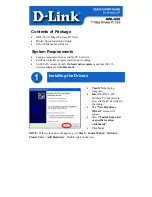
RX FIFO input
1
2
4
5
6
3
7
8
10
11
12
9
13
14
16
15
16XCLK
Internal RX signal
RXD output of
transceiver on
uart3_rx_irrx
(UART3.MDR2[6]
IRRXINVERT set to 1)
uart-008
Public Version
UART/IrDA/CIR Environment
www.ti.com
Figure 19-8. IrDA SIR Decoding Mechanism
Data can be transferred both ways by the module, but when the device is transmitting, the IR RX circuitry
is automatically disabled by hardware. The operation of the uart3_rx_irrx input can be disabled using the
UART3.
[5] DIS_IR_RX bit. Furthermore, the UART3.
[6] IRRXINVERT bit can
invert the signal from the transceiver (RXD) pin to the IRRX logic inside the UART. This inversion is
performed by default.
19.2.5.2.1.7 IR Address Checking
In all IR modes, when address checking is enabled by setting
[1:0] (see
), only
frames intended for the device are written to the RX FIFO. This is to avoid receiving frames not meant for
this device in a multipoint infrared environment. To program two frame addresses that the UART3
receives in IrDA mode, use the UART3.
[7:0] field and the
[7:0] field.
Table 19-5. EFR_REG[0-1] IR Address Checking Options
[1]
[0]
IR Address Checking
0
0
All address-checking operations disabled
0
1
Only address 1 checking enabled
1
0
Only address 2 checking enabled
1
1
All address-checking operations enabled
19.2.5.2.2 SIR Free Format Mode
To allow complete software flexibility when transmitting and receiving infrared data packets, the SIR free
format (FF) mode is a subfunction of the existing SIR mode; all frames going to and from the FIFO buffers
are untouched with respect to appending and removing control characters and CRC values.
This mode corresponds to a UART mode with a pulse modulation of 3/16 of baud rate pulse width.
For example, a normal SIR packet has BOF control and CRC error-checking data appended (transmitting)
or removed (receiving) from the data going to and from the FIFOs.
shows the SIR free format mode.
2878
UART/IrDA/CIR
SWPU177N – December 2009 – Revised November 2010
Copyright © 2009–2010, Texas Instruments Incorporated















































